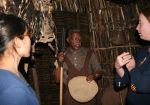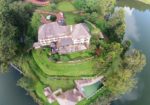
Mgahinga Gorilla National Park
Mgahinga Gorilla National Park sits high in the clouds at an altitude of between 2,227m and 4,127m. As itsRead more
Attractions Add to Favorites
Mgahinga Gorilla National Park sits high in the clouds at an altitude of between 2,227m and 4,127m. As itsRead more
Attractions Add to Favorites
Bwindi Impenetrable National Park is the most sought after world class tourist destination as it harbors more than aRead more
Attractions Add to Favorites
This replica of a complete Bakiga homestead was built in 2002 by Festo Karwemera, a Kabale elder and aRead more
Attractions, Cultures Add to Favorites
Sanctuary Gorilla Forest Camp is nestled deep inside Bwindi Impenetrable Forest, a UNESCO World Heritage Site in southwest Uganda.Read more
Accommodation, Guest Houses & Lodges Add to Favorites
Birdnest Bunyonyi Resort is a hotel on the shores of Lake Bunyonyi, a breathtaking oasis of serenty. Over 40Read more
Accommodation, Guest Houses & Lodges Add to Favorites
Chimps’ Nest is set against a stunning backdrop of Kibale Forest and the snow-capped peaks of the Rwenzori MountainsRead more
Accommodation, Guest Houses & Lodges, Hotels Add to Favorites
Mission Africa Safaris is a leading tour company registered in Uganda. We help put together exciting safaris in UgandaRead more
Tour Operators Add to Favorites
Y-Save Safaris is an initiative of Y-Save under the Y-Save investment Club. The Y-Save Investment Club is a bodyRead more
Tour Operators Add to Favorites
Leading tour companies in Uganda Great Lakes Safaris Limited was founded in 2001 by a young professional entrepreneur, MrRead more
Tour Operators Add to Favorites